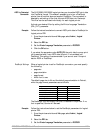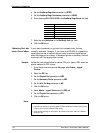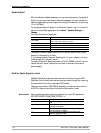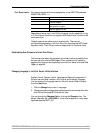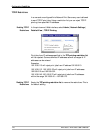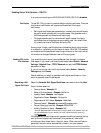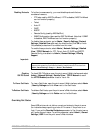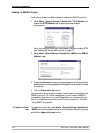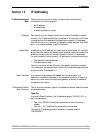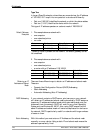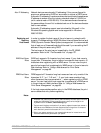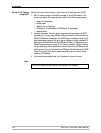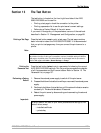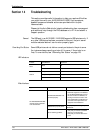
Configuration Possibilities
AXIS 5500 / AXIS 5550 User’s Manual 123
Disabling Protocols To further increase security, you must disable protocols that are
considered insecure;
• FTP (also used by AXIS ThinWizard, if FTP is disabled, AXIS ThinWizard
can not function properly.)
•Telnet
•Auto-IP
•DHCP
•BOOTP
• Remote Config (used by AXIS NetPilot)
• SNMP Configuration (also used by AXIS ThinWizard. Note that if SNMP
is disabled, AXIS ThinWizard can not function properly.)
To disable these protocols, go to Admin | Security Settings | Protocol
Settings | Detailed View and mark the check boxes. Click OK to finish.
Only enabled protocols will be visible from this view!
To enable these protocols, select Admin | Network Settings | Detailed
View | TCP/IP Network for FTP, Telnet, Auto-IP, DHCP and BOOTP.
Remote Config is enabled via Admin | General Settings | RConfig
Support.
Important:
Checking
SSL/TLS Status
To check SSL/TLS status, open the print server’s Web interface and select
Admin | Network Settings | Detailed View | TCP/IP Network to see if
the HTTPS Enabled parameter is set to Yes or No.
To View a Certificate To view a Certificate, open the print server’s Web interface, select Admin
| Security Settings and click View next to the Certificate.
To Delete a Certificate To delete a Certificate, open the print server’s Web interface, select Admin
| Security Settings and click Delete next to the Certificate.
Overriding Port Status
Some USB printers do not deliver correct port status to the print server
(for instance always reporting printer off-line even if the printer is on-
line). If you set the Override Portstatus parameter to Yes, the print server
will ignore the port status. To set this parameter, select Admin | General
Settings | USB1 from the print server’s Web interface.
To ensure maximum security, it is highly recommended that you change your Administrator
password after generating a certificate and disabling insecure protocols! This is done from
Admin | General Settings | Change => | General | Root Password.



